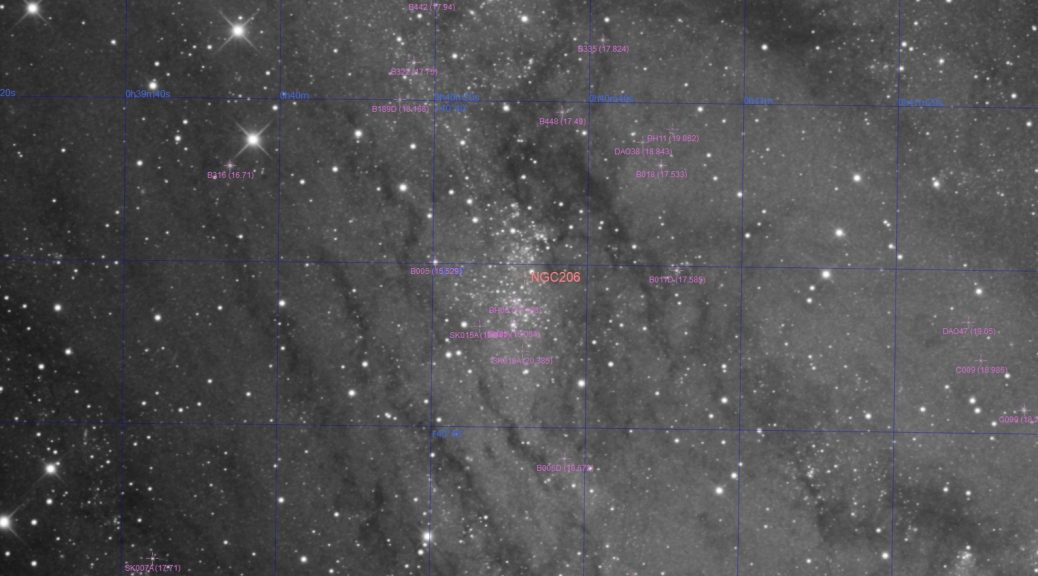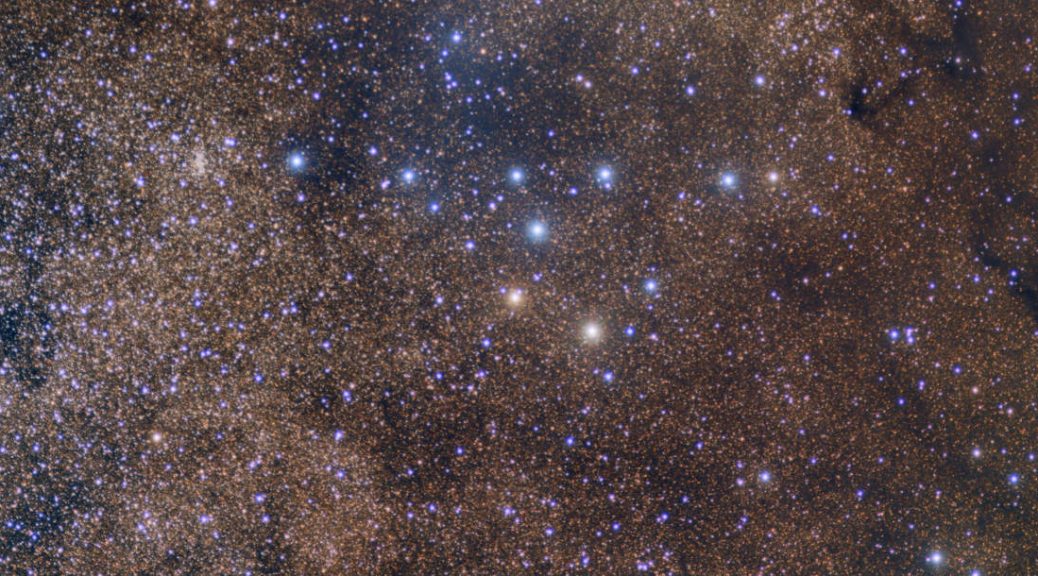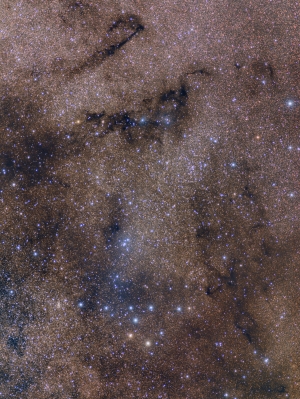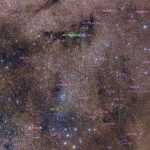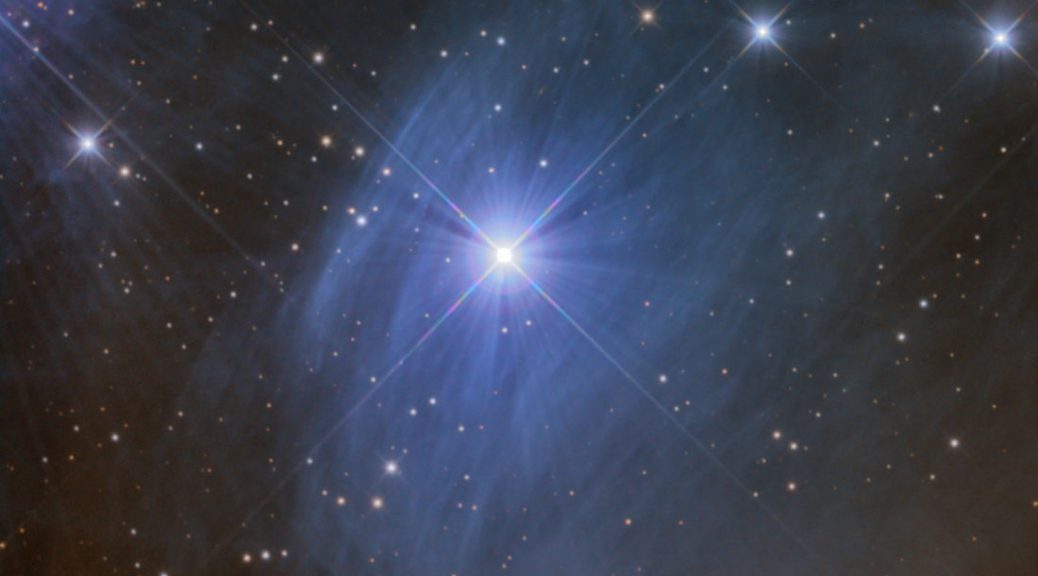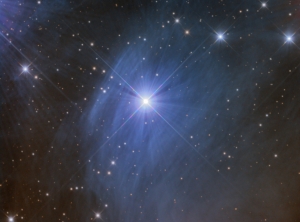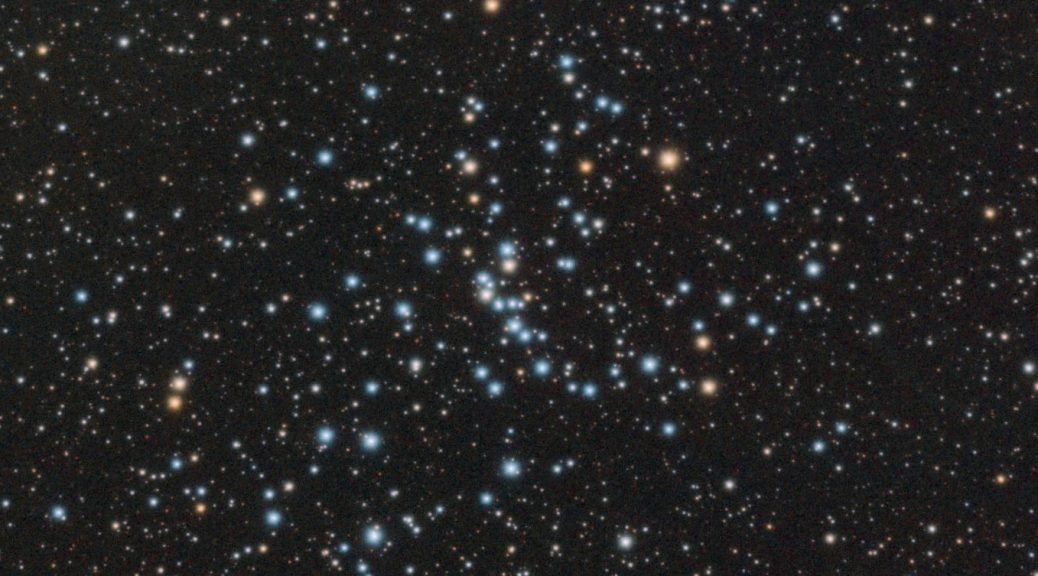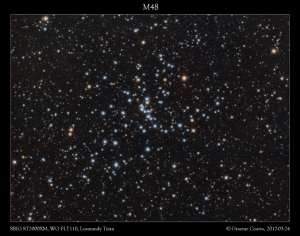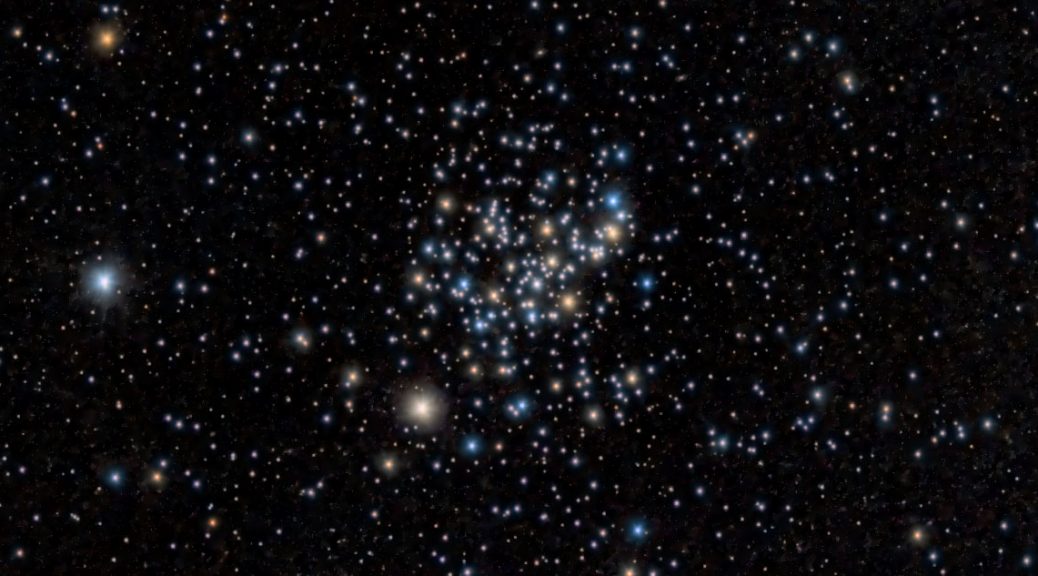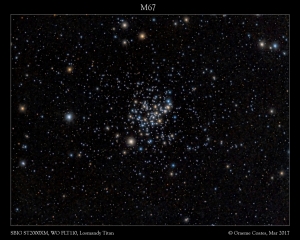Can you image 40 globular clusters at one time? Well – yes! In fact, with a wide enough field of view you can image many more, especially if you point towards such a rich collection like those found in the Andromeda Galaxy. I’d previously done so using my WO refractor, but this time wanted to go much closer in, staring at the large open cluster NGC206, located in the outer arms of M31.
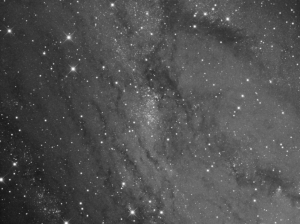 Here is an image taken through the Newtonian at 1583mm focal length which shows the region around NGC206 (in L channel only).
Here is an image taken through the Newtonian at 1583mm focal length which shows the region around NGC206 (in L channel only).
The annotated image below clearly shows the location of forty globular clusters from the Bologna Catalogue (plotted using Pixinsight’s Annotate tool, importing a custom catalogue generated as an extract from the Vizier tool). Figures in brackets are the catalogue magnitude.
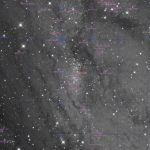 Time escaped me in doing the colour for this image, so it will remain as a greyscale image for the time being. However, the mottled effect in the star clouds within M31 are in fact real – close examination of the mottling and comparison to archive DSS images reveal identical patterns in the clouds – it’s at this level we start to resolve smaller stars in the Andromeda Galaxy – even larger telescopes such as the Subaru or the Hubble Space Telescope reveal much more detail in the star clouds.
Time escaped me in doing the colour for this image, so it will remain as a greyscale image for the time being. However, the mottled effect in the star clouds within M31 are in fact real – close examination of the mottling and comparison to archive DSS images reveal identical patterns in the clouds – it’s at this level we start to resolve smaller stars in the Andromeda Galaxy – even larger telescopes such as the Subaru or the Hubble Space Telescope reveal much more detail in the star clouds.
Image captured Oct/Nov 2018 from W Oxfordshire, UK.
